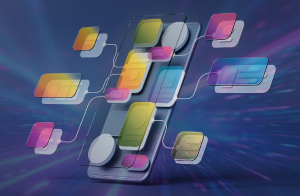Nearly 20% of Americans—approximately 60 million people—reside in rural areas where healthcare challenges are significant. These regions experience disproportionately higher rates of ongoing health issues and unfavorable health outcomes. As per the National Rural Health Association, rural healthcare systems typically serve patients who are generally older, less healthy, and have lower incomes than their urban counterparts. Despite these pressing needs, rural healthcare systems struggle to transition to value-based care models due to existing disparities, financial limitations, and technological barriers.
Emerging Healthcare Delivery Models
Increasing demands for scalable and effective healthcare delivery—amid persistent underfunding and resource limitations—are driving new approaches in rural healthcare provision.
Home-Based Healthcare: Residences are becoming increasingly important locations for healthcare delivery and management. A variety of technological tools are being developed to support health-related activities in these non-traditional settings. Over the past decade, patients and caregivers have increasingly relied on various digital resources, including informational websites, patient-accessible electronic medical records, and virtual support communities.
Remote Health Services: Telemedicine represents a crucial tool for addressing rural healthcare accessibility issues. Through virtual care platforms, rural patients can consult with specialists promptly while remaining in familiar surroundings, whether at home or in local facilities. Additionally, local healthcare providers benefit from specialist expertise delivered via remote consultation technologies.
Community Health Advocates: This approach enhances healthcare access by leveraging community health workers as intermediaries between medical providers and rural residents, helping ensure that individual health requirements are adequately addressed.
All these approaches require robust technological support for patients and caregivers operating in remote settings. In healthcare environments where every moment is critical, smoothly functioning IT systems are essential for enabling seamless interactions and secure data exchange. Healthcare providers rely heavily on these systems to perform essential functions, including accessing patient information, monitoring critical care equipment, and enabling instant team communication, making continuous monitoring, optimization, and innovation vital. In particular, rural healthcare delivery depends on technology that works reliably, even in resource-constrained settings.
The push toward value-based care in healthcare is further amplifying the need for digital agility. Yet, ongoing problems in healthcare systems such as fragmented IT support, inconsistent access, and staffing shortages—continue to challenge rural providers aiming to modernize.
The Service Desk’s Critical Role
At the center of these technological ecosystems is the service desk—a centralized resource for assistance and services. An efficient service desk serves as the primary defense against technical disruptions, ensuring all systems remain operational and responsive. It also serves as an essential gateway, connecting patients with complex medical support resources. It functions as a dynamic center where inquiries, concerns, and service requests converge, requiring immediate, personalized, and accurate responses.
However, conventional service desk models struggle to keep pace with evolving healthcare landscapes and increasing patient expectations. Modern patients, accustomed to frictionless interactions with service providers in other industries, naturally expect similar experiences from healthcare. To meet these demands and deliver seamless, consumer-focused remote care experiences, rural healthcare systems are increasingly looking to supplement their internal capabilities with AI-enhanced service desk expertise.
This shift is especially critical in rural healthcare environments where IT disruptions can have outsized consequences on service delivery and patient safety.
The Smart Service Desk
An intelligent service desk incorporates several advanced features:
- Service intelligence utilizing cognitive and big data analytics to aggregate customer information, personalize experiences, and determine each user’s technical proficiency level to guide appropriate agent responses
- Virtual agent integration within self-service portals, providing personalized support for various needs – from password resets to troubleshooting
- Interconnected omnichannel communication, ensuring customers don’t need to repeat issues during support transitions
- Biometric authentication, allowing customers to securely verify their identity before engaging with an agent
- Intelligent automation, increasing efficiency and reducing costs through autonomous and cognitive platforms
- Predictive analytics, enabling proactive issue detection and resolution before disruptions occur
- Promotion of self-service options to reduce costs, particularly important for financially constrained rural healthcare systems
These features, when combined, create a technology layer capable of supporting the continuity and personalization needed across today’s rural healthcare settings.
Benefits of AI-Enabled Service Desks
AI-powered service desks offer significant advantages to healthcare professionals:
- Enhanced Productivity: AI chatbots automate repetitive tasks such as appointment scheduling, medication reminders, and answering frequently asked questions. This automation allows human agents to focus on more complex and critical responsibilities, ultimately improving overall service desk efficiency. Current AI chatbot solutions can potentially handle up to 80% of routine inquiries, significantly reducing healthcare professionals’ workload.
- Continuous Availability: AI-powered chatbots provide real-time assistance to both healthcare professionals and patients. They respond to inquiries and offer support whenever needed, minimizing wait times and improving healthcare service accessibility.
- Increased Capacity: AI-enhanced service desks are capable of processing requests more quickly and handling substantially higher volumes of calls, resulting in reduced wait times and improved care access.
- Timely Information Access: By providing prompt responses and assistance, AI chatbots and virtual assistants reduce patient call volumes, helping both patients and healthcare professionals navigate challenging periods such as seasonal illness surges or public health emergencies.
- Improved Patient Experience: AI healthcare applications can analyze large patient datasets, including medical histories and treatment records, to generate customized recommendations. AI algorithms can evaluate symptoms and provide preliminary guidance, helping patients decide whether to seek medical attention or follow self-care protocols. Increasingly, patients are open to using AI-powered virtual assistants for scheduling, accessing test results, and receiving medication reminders.
- Financial Savings: Through automation of routine tasks, reduction in manual intervention, fewer errors, and optimized resource allocation, AI-powered healthcare service desks can reduce operational expenses. Smart service desks enhance productivity, streamline workflows, and improve efficiency—resulting in cost savings for healthcare organizations. Frost & Sullivan estimates that AI implementation could save approximately $150 billion annually in the United States by 2026, driven primarily by task automation, better resource allocation, and reduced medical errors.
- Advanced Analytics and Decision Support: AI-enabled service desks can identify trends, patterns, and risk factors associated with various health conditions by analyzing vast healthcare datasets. These insights enhance preventive care strategies, optimize resource allocation, and help healthcare personnel anticipate and prevent negative outcomes. AI also strengthens clinical decision-making by providing relevant information, evidence-based recommendations, and personalized treatment options—contributing to better patient outcomes, fewer errors, and improved consistency of care.
These benefits are especially critical for rural healthcare providers seeking to stretch resources while ensuring high-quality care across geographically dispersed populations.
HTC’s Smart Service Desks in Action
At HTC, we continue to support healthcare organizations by enhancing service desk operations across IT, clinical workflows, and patient engagement. Our AI-enabled capabilities—ranging from intelligent ticket routing and virtual assistants to advanced analytics and sentiment-aware auditing—are designed to help healthcare teams work more efficiently while improving user experiences.
In current deployments, we assist with a wide range of support needs—from triaging hardware, software, and network issues to helping patients with tasks like billing inquiries and password resets. Our service desk teams also provide application-level support across multiple EHR/EMR platforms, including Epic.
These efforts typically result in measurable outcomes, including:
- First Contact Resolution > 75%
- Customer Satisfaction > 90%
- Service Level Achievement > 90%
- Quality Assurance > 95%
By leveraging intelligent automation and human-centered design, we aim to contribute to more accessible, responsive, and sustainable healthcare service delivery—especially in rural healthcare and other underserved settings.





